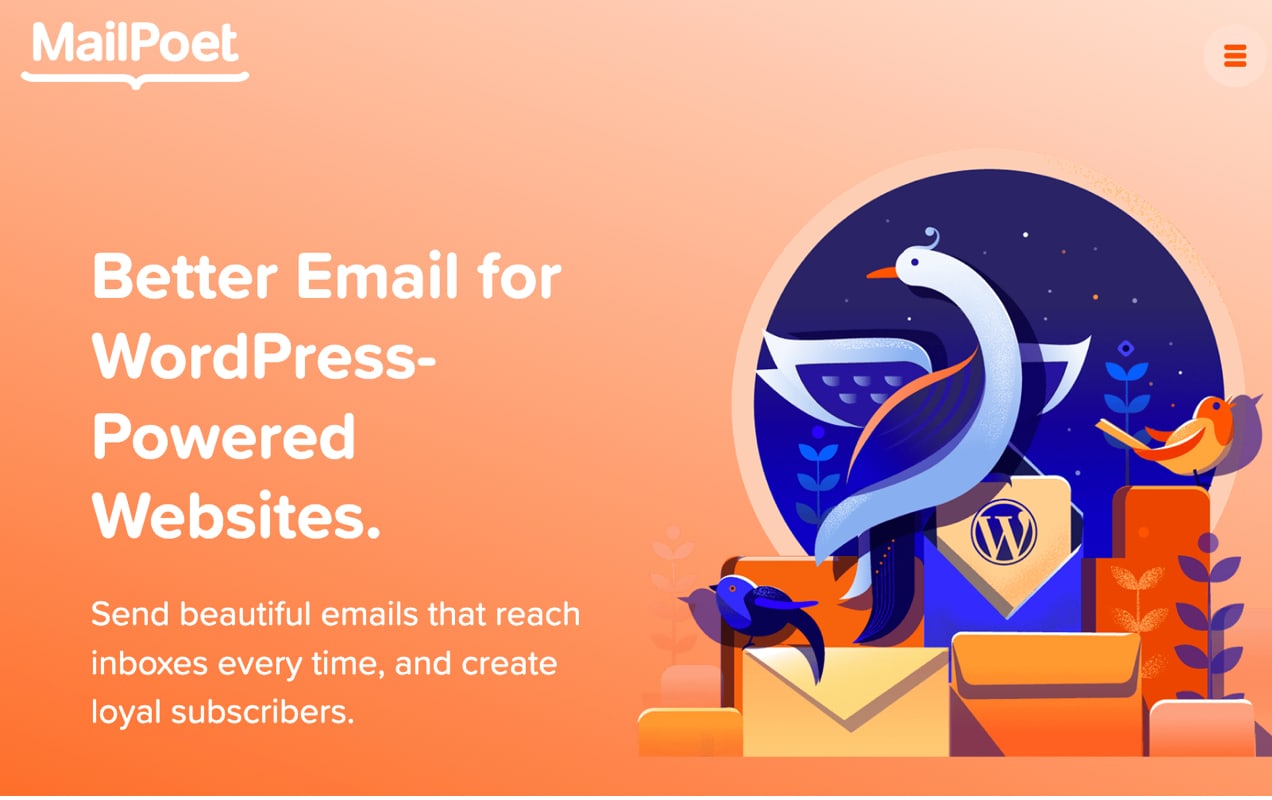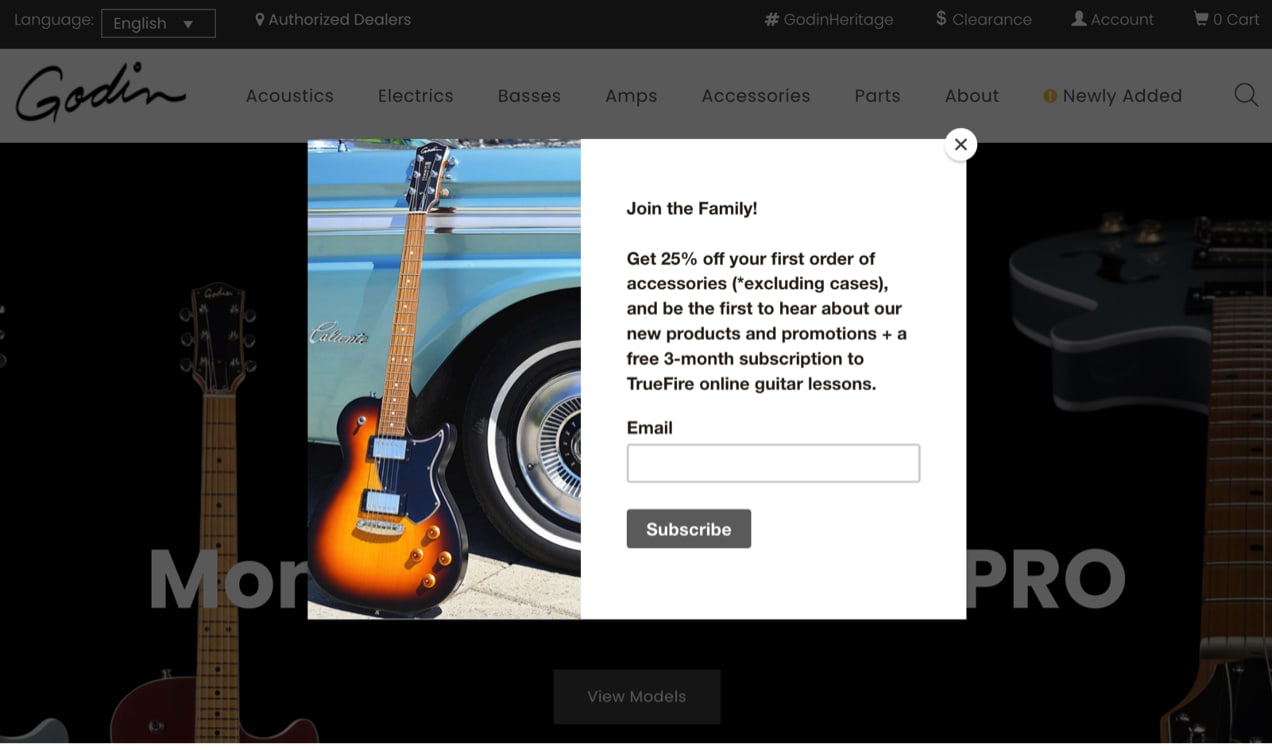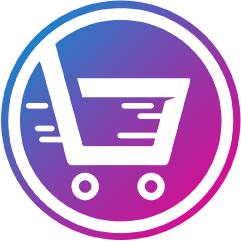There are a variety of ways to help customers find your online store — but many of them require a financial outlay on your part with no guarantee of a return on investment (ROI). Luckily, eCommerce content marketing offers a lower-cost alternative to paid ads. It democratizes the playing field: if you’re willing and able to put in the work, you can find success even without major financial resources.
Let’s define what eCommerce content marketing is, why you should invest in it, and how to develop effective content marketing strategies. Then we’ll review a few eCommerce content marketing examples.

What is eCommerce content marketing?
At its core, eCommerce content marketing is about using media to grow your customer base and increase revenue.
Your target customers have a question or a problem, and they’re looking for answers. You offer a product or service on your eCommerce site that solves their problem. If you give them valuable — and timely — information, they’ll be more likely to choose your offering or solution.
Why? Because you’ve given them reason to view you as a trusted authority and trust is the most important factor people consider when making a purchase.
Content marketing takes many forms, including:
- Audiobooks
- Blog posts
- Checklists
- Courses
- eBooks and guides
- Influencer media
- Infographics
- Podcasts
- Reports
- Tutorials
- User generated content (e.g. customer stories and reviews)
- Videos
- Webinars
- White papers
Depending on the kind of business you’re in, your eCommerce content marketing efforts may be geared towards providing useful information about your products and industry, helping people solve technical problems, or educating your audience on certain niche topics.
But keep in mind that your content marketing strategy doesn’t always have to be how-to guides and educational material. You may also simply offer a solution to the age-old problem of boredom — entertainment.
While providing high-quality content that your target market values is key to gaining their trust, let’s not forget the most important part of eCommerce content marketing — driving sales.
Content marketing can be done on your own website, through social media, or on other third-party platforms. You can also leverage interviews, affiliate marketing, and social media influencers to further extend your reach.
How content marketing applies throughout the customer journey
Beyond the many forms content marketing takes, it can also apply throughout various points of the marketing funnel.
At the top of the funnel, you may attract first-time visitors with blog posts and content that answers specific questions or simply connects with them around a shared passion.
To serve your goals further down the marketing funnel, you should build content that helps people understand what your offerings do and why they’re applicable to your audience.
Later, content might be more sales-focused and seek to convince your audience to take action.
Further still, some content should be focused on endearing your brand to customers so they become loyal, long-term supporters.
A full-scale content marketing strategy will address every point in the buyer’s journey and pull together many different kinds of content, distribution channels, and content goals into a cohesive program.
Why invest in eCommerce content marketing?
Any eCommerce store can benefit from content marketing. It provides novel ways for people to discover your brand and products, reduce the amount of money you might otherwise be spending on paid advertising, and build brand trust. Here are a few other reasons to invest in content marketing for you online store:
It can circumvent ad restrictions
There are certain types of online retailers that should rely almost exclusively on eCommerce content.
If your eCommerce store sells restricted products, you may have trouble advertising on some platforms due to their policies. Your ad campaigns may frequently get rejected, making it difficult to capitalize on the digital marketing opportunities that so many other eCommerce stores have.
Generating organic traffic from search engines or attention from a social media audience can drive traffic regardless of many restrictions.
It’s free to get started
While you can certainly invest plenty of money in content marketing efforts, and should as your brand grows, a organised can start gaining attention for their idea without anything but a device and internet connection.
If you’re strapped for cash, but high on ambition and time, you can create content for your own site and for third-party sites that attracts new followers, demonstrates the value your offer provides, and endears them to your brand for years to come.
It’s not an instant approach to gaining sales, but it’s a great option for those with limited financial resources.
It’s owned media
Though you may publish content on a variety of platforms, the content you create and publish to your own site is completely within your control — particularly if you’re using WordPress and WooCommerce — because you’re not subject to the rules and regulations of a third party.
So you can say exactly what you want, how you want to say it, and in an environment that’s free from the clutter of ads by competitors or other publishers.
This content has long-term value and its development adds equity to your business in ways that temporary paid ads don’t.
It provides long-term ROI
Though it takes longer to achieve results, content marketing provides a strong ROI and the opportunity to not be beholden to paid media.
Paid ads have their place, but every click or impression immediately costs you money. If you stop writing the check, the traffic stops, too.
With content marketing, as you grow an audience and move up in search engine rankings, the attention generated doesn’t simply stop overnight and isn’t limited by budget. Whether you get ten visitors or ten thousand, it costs the same.
It’s more genuine
Content marketing that adds true value — educational, entertainment, or otherwise — to your audience is better received than a paid ad that interrupts someone’s video or social media feed. It makes a more human connection and feels more genuine than a banner promo on a third-party site.
It’s multi-faceted
Content marketing isn’t just a siloed channel. You can use it to improve all areas of your marketing strategy.
For example, you could write one blog post, then:
- Publish it on your website, which can help with SEO and brand reputation
- Integrate it into your social media marketing
- Include it in your email newsletter
- Link to it in your paid advertising efforts
- Send it in response to customer support queries
- Add a link to it in guest posts or interviews
This is the perfect demonstration of the phrase, “A rising tide lifts all boats.”
It’s a great exercise for your team
Creating unique content produced and owned by your brand is a valuable exercise in itself, regardless of the marketing impact it makes. It gives your team the opportunity to participate in shared creativity and define a brand that’s representative of their unique and diverse ideals.
It can spur greater cohesion as an organization and a shared sense of purpose that improves the quality of work throughout the company.

Five steps to create a winning eCommerce content marketing strategy
In the eCommerce world, if you want to consistently generate more revenue and increase customer loyalty, you’ll have to do more than write a few blog posts on your website or put a couple of videos on your YouTube channel. You’ll need to have a solid content marketing strategy.
One of the biggest and most common content marketing mistakes is content creation without a defined strategy. If you don’t know what will resonate with potential buyers, aren’t sure whether to focus on blogging or videos or podcasting, and don’t have a publishing schedule worked out, you’ll find yourself feeling frustrated and scattered.
Worst of all, you won’t achieve the results you’re looking for.
With careful planning and curated content, however, you can develop an eCommerce content strategy that bolsters your brand authority, attracts more potential buyers to your product pages, takes people on a compelling customer journey, and improves customer retention.
Follow the five steps below to get started on planning your eCommerce content marketing strategy:

1. Choose the right channels and media
With the multitude of options available for distributing content to potential customers, it’s crucial to choose the right types of media and channels. Not only should they align with your goals, fit your brand, and reach potential buyers effectively, they also need to be something you can realistically manage.
Define your content goals and capacity
Different types of content serve various purposes. Ask yourself these questions when you’re establishing your content goals and determining what you can commit to:
- Are you aiming to increase brand awareness, generate leads, or drive sales?
- What kinds of products are you selling and do they lend themselves to being discussed in specific types of media?
- What type of media do you have expertise in?
- Do you have access to any specialised equipment you would need to create your content?
- Are you able to pay professionals to create your content for you? What’s your budget?
- What platforms are you interested in publishing on? How many can you comfortably manage?
- How often can you commit to publishing?
Clearly defining your content goals will help determine the media and channels you should focus on.
For instance, if your goal is to raise brand awareness, video content distributed through social channels and blogging might be ideal. In contrast, if lead generation is your primary objective, email marketing and webinars may be more appropriate.
Keep in mind that not every media type works for every eCommerce company and there’s plenty of room to be creative and play to your strengths. Don’t make your first attempt at content creation something that isn’t a good fit for your goals, requires a huge time or financial investment, or is way out of your comfort zone.
Start with something that you relate to, have the budget for, and that will take the least amount of time to go live with. You can always build and expand from there.
For instance, if you’re on a shoestring budget and know nothing about video production, scripting, motion graphics, and also really dislike being filmed, then perhaps video marketing is not for you.
If you enjoy writing or have great writers on staff, then blogging, writing ebooks, or creating how-to articles might be the best fit.

Understand your target audience
Before finalising your media and channel selection, it’s imperative to understand your target audience. You should create detailed buyer personas that outline their demographics, preferences, online behavior, and customer pain points.
Knowing your audience helps you tailor your content and select the most suitable channels to reach them effectively.

Select social media wisely
Social media is a powerful channel for eCommerce content marketing. But you don’t have to be active on all platform — you just need to choose the right social media channels.
Your content marketing campaigns will be more successful on platforms that resonate with your target demographic. Focus on creating content for the channels that are most popular with your existing customers or used by bigger eCommerce brands similar to yours.
For instance, eCommerce websites that sell fashion or lifestyle products might find Instagram and Pinterest more effective. If you sell gardening tools or DIY kits, YouTube videos that provide instructions or demonstrations of your products may be where you want to focus your energy.
If your eCommerce site sells games, crafts, or niche fandom products, try building an online community on a social media channel. Platforms like Facebook and Discord allow you to create groups so that loyal customers and fans can exchange ideas, ask questions, and socialize.
For B2B eCommerce businesses, social media marketing is still important. In fact, social media is the most effective channel for driving revenue for B2B companies, with content marketing coming in second. However, the channels you’ll want to focus on will be different from B2C eCommerce companies.
B2B businesses may want to focus primarily on LinkedIn, Facebook, and Instagram.
Find out where your audience spends their time online and meet them there.

Embrace email marketing
Regardless of the media you choose or where you’re publishing it, you can leverage email marketing with software like MailPoet to reach your audience.
Whether it’s newsletters, product updates, tips and tricks, or personalised recommendations, email marketing allows you to engage with your customers on a more personal level. Segment your email list to send tailored content to different customer groups based on their preferences and behaviors.

Consider influencer marketing and user generated content
Influencer marketing can be a powerful tool for eCommerce websites. Identify influencers in your niche or industry whose followers align with your target market. Collaborate with these influencers to create content and promote your products. This can help you tap into their loyal follower base and gain credibility in your niche.
User generated content is also helpful and doesn’t necessarily have to be created by influencers with huge followings. Many eCommerce brands can boost online sales when they share customer stories on their content distribution channels.
People want to hear directly from other customers about whether a product works and how it works so they can envision how it might fit into their own life. Reviews and testimonials from actual users can go a long way towards building consumer confidence and increasing sales.

Engage in brand collaborations
Brand collaborations are another great way to diversify content marketing for eCommerce. When two brands with complementary values or demographics come together, they can produce content that enhances their combined market presence and builds trust and credibility.
These partnerships can introduce products or services to a fresh customer base, foster creative and innovative content, and generate buzz. Moreover, brand collaborations can leverage each other’s strengths, whether that’s expertise, resources, or a shared ethos, ultimately increasing the likelihood of a successful and memorable marketing campaign.

Write guest posts and do guest appearances
Guest blogging, interviews, and Q&As are another great example of strategic content marketing. They provide content value for the businesses whose websites and media channels you are posting on and you, in turn, get broader exposure and an organic traffic boost for your eCommerce brand.
Depending on the types of media you’re focusing on you may want to:
- Submit guest blog posts to complementary brands’ websites
- Write articles for publishing platforms like Medium or industry-specific magazines and journals
- Answer industry-related questions on platforms like HARO or Quora
- Do guest interviews on another brand’s YouTube channel
- Do podcast interviews
- Do guest lectures at conferences and events
- Participate in a Reddit AMA (Ask Me Anything)
Analyze and adapt
Your choice of media and channels should not remain static. Regularly analyse the performance of your content across different platforms and adapt your strategy accordingly.
Pay attention to metrics like engagement rates, click-through rates, conversion rates, and ROI. Use this data to refine your content strategy and make informed decisions about where to allocate your resources.
Don’t forget to stay on top of what your competitors are doing. Regularly search out eCommerce content marketing examples from other companies in your industry or niche. Take note of what they are doing well and use that as inspiration for your own eCommerce business.

2. Create high-quality, relevant content
Content marketing for eCommerce sites doesn’t always have to be high-budget and high-polish, but it should still be thoughtfully created, engaging, and of interest to potential customers.
You don’t have to have studio quality lighting and expensive microphones, but people do need to be able to see and hear you. And anywhere where your production values might be lacking, you should make up for in the quality of your messaging.
Even though your content doesn’t have to be perfect to be effective, you should still work towards the best quality that you can manage with your available resources, time, and skills.
Six tips for better production quality
- Use high-quality imagery. You can take your own photos or video using the latest smartphone or a high-end camera or hire the work out to someone else. Either way, make sure that the resulting imagery is well-lit and composed.
- Purchase the right kind of equipment. Can you use the built-in mic on your laptop to record your podcast? Yes. Should you? Probably not. If you’re not sure what equipment you should buy, you can search online for recommendations, ask in a topic-specific subreddit, or reach out to other industry professionals you know.
- Invest in good gear. Get the best quality and highest durability equipment that your budget allows. You’ll spend less in the long run if you buy equipment that stands the test of time and performs well. If you start off with something unreliable it may end up costing you more by producing unusable content, wasting time, or just causing endless frustration with unpredictable performance.
- Research and fact check. If you’re creating informational content, ensure your facts are correct by doing thorough research. If possible, include references to your sources. If your content is mostly for entertainment value, you’ll still want to research the topics your customers are interested in, any jokes or memes that they might identify with, and any timely events or trends in your niche that you could react to or critique in your media.
- Create scripts and outlines. If you’re creating video or audio content, a script will help you stay on track and sound professional. If you’re writing an article or blog post, creating an outline provides a framework to keep you on topic.
- Use professional editing software. Some content marketing platforms come with their own editing tools. TikTok and Instagram have photo filters and video editing tools built-in. But those tools may be too limited, or you may not be distributing your content on those channels, so make sure that you are investing in audio/visual (AV) editing tools that can help you craft the level of content you want to produce.
Some examples of photo, video, and audio editing software include:
- Canva
- PhotoPea
- Adobe Creative Cloud (Photoshop, Premiere Pro, Lightroom, After Effects)
- GarageBand (Apple)
- Audacity
- Openshot
- Clipchamp
For writers, there’s editing software that you can use like Grammarly and style guide tools like Writer to help keep your articles and blog posts professional and on-brand. You can also take advantage of AI tools like ChatGPT or Jetpack AI Assist to speed up content development.

3. Use search engine optimisation techniques
Without content like posts or tutorials, your website relies on product pages. But not everyone knows they need your product, or that it even exists. People don’t head to search engines for a product; they search for an answer. That’s one reason content marketing goes hand-in-hand with search engine optimisation (SEO).
Whether you’re creating blog posts, product descriptions, or video content, ensuring the web pages they display on are optimised for search engines is crucial for visibility. Conduct keyword research and incorporate your findings naturally into your content. Leveraging SEO helps your content rank higher in search engine results, increasing organic traffic.
Keyword research and use isn’t just something you need to think about for content appearing on your own website, it’s important for every channel your media is distributed on. And those channels should all link back to your website so visitors can sign up for your email list and purchase your products.

4. Implement a sales funnel
Not everyone who reads your blog or watches your videos will become a customer immediately. It may take days, weeks, months, or even years for a lead to turn into a customer. But by creating a systematic approach that guides people through the customer journey, you can take leads through from initial awareness to making a purchase.
After you’ve got the attention of potential customers through your content marketing strategies, you’ll want to capture, nurture, and then convert your leads.
Capture leads
In this stage, you want to capture leads’ information. Implement lead generation tactics such as email opt-ins, free ebooks, webinars, exclusive offers, and even rewards for social follows. The goal is to turn your content consumers into leads you can nurture.
Nurture leads
Send targeted emails, provide case studies, offer product demos, send direct messages on social media, or incentivise folks to interact with your website’s chat system. Your content should guide them towards making a purchasing decision. Don’t forget — personalisation is key to making your leads feel valued and understood.
Offer solutions and incentives
Now it’s time to convert leads into customers. Present your products or services as solutions to their problems. Highlight the benefits, provide clear calls to action, and make the buying process as simple as possible.
Build trust and long-term relationships
A successful funnel doesn’t end with a sale. It’s about building long-term relationships. Keep in touch with your customers through post-purchase emails, provide excellent customer support, and encourage referrals or repeat business.

5. Publish regularly
You don’t need to write an award-winning article or produce Oscar-worthy videos every week to accomplish your goals. You do, however, need to publish content consistently.
For many, this is the hardest part. A few sporadic blog posts are unlikely to make a significant impact on your site traffic. Create a plan to publish a certain number of blog posts in a given period of time — maybe one post every two weeks.
Here are some tips to help you develop a publication schedule and some tools to help you manage it:
- Decide on frequency. If this is your first time creating a content marketing strategy, you might want to start with publishing once a month, then ramp up to once a week or multiple times a week.
- Use a content calendar. A content calendar will help you stay organised. You can use a physical planner, a calendar app, or an online planning tool.
- Create backup content. Try to create some backup and bonus content. Especially if you are running a one-person show, you may have sick days or need to take off work for a family emergency. Having extra content that you can release will help keep your content machine moving along effortlessly in your absence.
- Automate publishing. In WordPress you can schedule posts to publish at a future date. Some social platforms have this feature as well, but it’s a lot easier to manage your social media posts all in one spot. Tools like Jetpack Social can help streamline your process. Most email marketing platforms as well as tools like AutomateWoo also have the ability to schedule email campaigns in advance as well as create automated customer journeys based on user behavior.
Ecommerce content marketing examples
We’ve discussed how to create your own eCommerce content marketing strategy, but before you begin crafting your plan you may want to research what other eCommerce companies are doing for inspiration.
Let’s take a look at a few examples of how each eCommerce brand below approaches attracting, nurturing, and converting leads through their content marketing.
1. Attracting leads: 2 Hounds Design

Blog posts that answer commonly-asked questions can be an excellent way to attract leads.
Let’s say you’re a dog owner and it’s the middle of winter. It’s no fun to take your dog out for a walk when it’s snowing sideways, so you just stay inside and keep warm. The problem is, your dog needs exercise. So you might search, “How do I keep my dog active in the winter?”
2 Hounds Design, which sells dog leashes, collars, and related products, wrote a blog post with five ways to help your dog stay active during colder months.
When you find the answer to your question on 2 Hounds Design’s site, you might also poke around their product pages to see what’s available. If your furry friend needs a new leash or collar, you’ll make a purchase.
If not, you may still end up following their social profiles or signing up for their newsletter because you find the content so interesting. Eventually, when the timing is right, you’ll probably make a purchase.
Would you have found this site without that article? Highly unlikely.
2. Nurturing leads: Godin Guitars
You can do one of two things with your new leads:
- Sell them something immediately
- Collect their contact information and start nurturing them
The second choice is for leads who may not be ready to buy, but want to stay informed about your products and services. If you offer them valuable content — an eBook or a free guide — they’ll gladly hand over their email address or follow you on other social media platforms.
A great example of this is Godin Guitars.

Godin offers a free three-month subscription to an online guitar lessons service when you sign up for their mailing list. These additional content and service offerings keep subscribers engaged and if they aren’t ready to make a purchase now, they may be convinced somewhere down the line.
With this approach, your leads are now contacts, and you can follow up with them as long as they remain on your mailing list. As you continue to produce new content — blog posts, videos, PDFs, infographics, webinars — send it to your email list and post it to your social media accounts.
By continually providing valuable content that solves problems and answers questions, people begin to trust you as a source of valuable information. When they’re ready to buy, they’ll choose you.
3. Converting leads into buyers: Gorilla Printing
Depending on the problem you’re solving, some content can directly sell the solution and link to appropriate product pages at the same time. It solves a problem through sales, suggesting specific items readers can use to meet a need.
Gorilla Printing, a large format printing business based out of New York, uses WooCommerce as their B2B eCommerce platform.
On their site, they wrote a blog post that explains the benefits of using LED light boxes as part of your marketing strategy. They show several examples and give useful details about how to design for a light box.
If you go to the page, you’ll notice a chatbot in the corner. Readers might have additional questions, which they can ask directly in the chatbot on that page without having to navigate elsewhere.

Gorilla Printing uses content marketing to attract leads and then offers additional ways to engage with them. Within the blog post, and most certainly near the end, you should always give the reader a next step to take — like “buy now” buttons that link to product pages. At the very minimum, you should offer them a way to contact you — like a chatbot or link to your contact page — or a free offer in exchange for their email.
Though it may not result in an immediate sale, continuing to engage prospects increases the chance that they will become paying customers.
Is eCommerce content marketing easy?
Yes and no. If you’re someone that doesn’t even enjoy creating content, it can be difficult to stay consistent and the results will likely show. In that case, delegate the work to a professional (and don’t micromanage it — you know your business and content creators and marketers know theirs). But if you love writing or making TikTok videos or sharing customer success stories on Instagram — it may come easy to you.
However you decide to approach developing your eCommerce content, make sure to come up with a plan. Research eCommerce content marketing examples from other online stores, publish in a format you’re comfortable with, come up with a schedule and stick to it.
Focus on topics you’re passionate about and that you can relate to your eCommerce website. Listen to customers and take note of the most common questions they ask. Then, answer them using the appropriate media and channels.
The most important thing? Get started.








